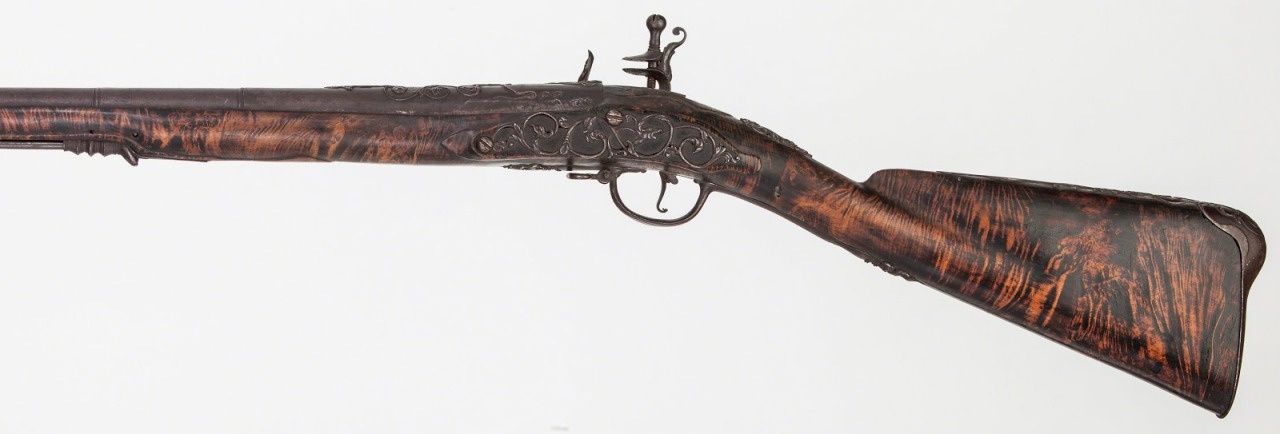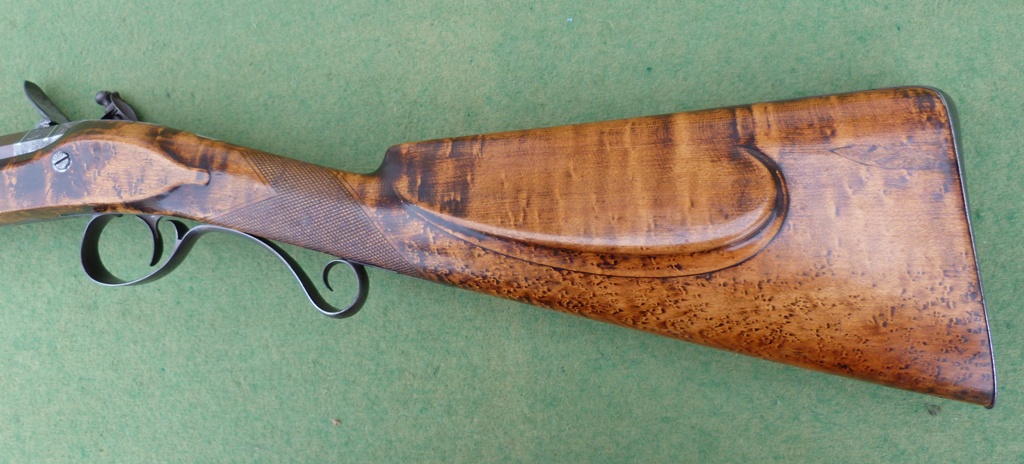Hi,
I decided to write this because of another thread discussing if a Kibler fowler can represent English guns earlier than the 1760s (it does). Participating in that thread, I thought it might be valuable to members of the forum to discuss some of the history surrounding guns such as Jim and Katherine's offering that is important for understanding American and British history particularly on the eve of the 250th anniversary of our revolution. So here goes.
Guns were big business in England during the 18th and 19th centuries. At one point, Birmingham was the largest producer of firearms in the world and in the 1770s, 25% of the total workforce in the city was involved in some way with gun making. During that time, think of England as we think of Japan in the 1970s and 80s, South Korea in the 1990s, and China in the 2000s. It was a nation that depended on exporting manufactured goods. It could not economically support its population without the manufacturing of goods for export. Its colonies in North America were valuable for raw materials but mostly as consumers of British export goods. The real raw resource that England wanted to import was sugar from the Caribbean. Those sugar plantations added revenue to the British government far greater than anything obtained from the American colonies. The value of the American colonies was as consumers. And there lies the rub. This was "merchantilism" pure and simple. Mercantilism is the economic notion that a country needs a strong positive trade balance to thrive and the focus of government was to enhance and protect that trade imbalance. So, England sought to suppress any competing manufacturing and that included the colonies. American colonists were to buy British goods not make them. Consequently, they did not promote arms manufacturing in the colonies. The influx of Germanic gun makers into PA likely increased their heartburn but as the colonial gunsmiths used mainly imported barrels, locks, and hardware, the British exporters were not overly concerned, and Birmingham gun makers could make most guns in demand in the colonies at far lower prices and of much higher quality. Hence the fowler offered by Jim and Katherine represents one of the most common guns owned by colonists. Most colonial gunsmiths could simply not compete unless they offered something very different and desirable as a unique good for sale, or focused on repairs, restocking and importing English and German guns and parts.
American colonial entrepreneurs were stifled. Moreover, the growing American population was not going to just make livings as farmers, retailers of English goods, tobacco planters, fishers, and producers of raw resources. They wanted to create a vibrant agricultural and manufacturing economy filled with jobs and opportunities for their growing population constrained by the British government. That impulse was revealed by the resentment colonists felt at being cut off from new lands to the west despite British and colonial agreements with the native Americans. In my opinion, that was the real reason for our revolution. The business and professional classes of colonists felt themselves in a mercantile cage and wanted out. They were the class of folks who had money and clout within the colonial legislatures and they fomented the rebellion among the working classes many of whom also saw advantages to local rule. The notions of freedom and liberty were mainly expressions of our desires for economic freedom. We already had a lot of other freedoms under British rule. So Kibler's fowler represents the strength and quality of the British economic machine but also symbolizes the economic suppression of colonial manufacture. Now don't get me wrong here. During the Rev War and very shortly thereafter, American businessmen realized the economic benefit of importing guns and gun parts from England right up to the American Civil War. It took America a long time to develop an industrial base that could compete with Britain and British export firearms were hugely popular in America right up to the Civil War.
So let me bring this back to the 18th century. From an economic standpoint, the North American colonies were a sideshow valuable as consumers and as a base for supplies to the really valuable colonies in the Caribbean. The British parliament let us go in the 1780s because they valued the West Indies far more and could not protect both from the French and Dutch. They also had India in their pocket and so except for "National Honor" the American colonies could be cut loose and it would not matter all that much. The proof of the pudding is the British empire and wealth grew immensely after the Rev War and the loss of the American colonies barely had any impact. During the early 19th century, British export guns descendants to Jim and Katherine's fowler were again commonly imported in America and even British-made muskets armed our militia units. We simply could not divorce ourselves from British manufacturing might until the middle of the 19th century.
dave






